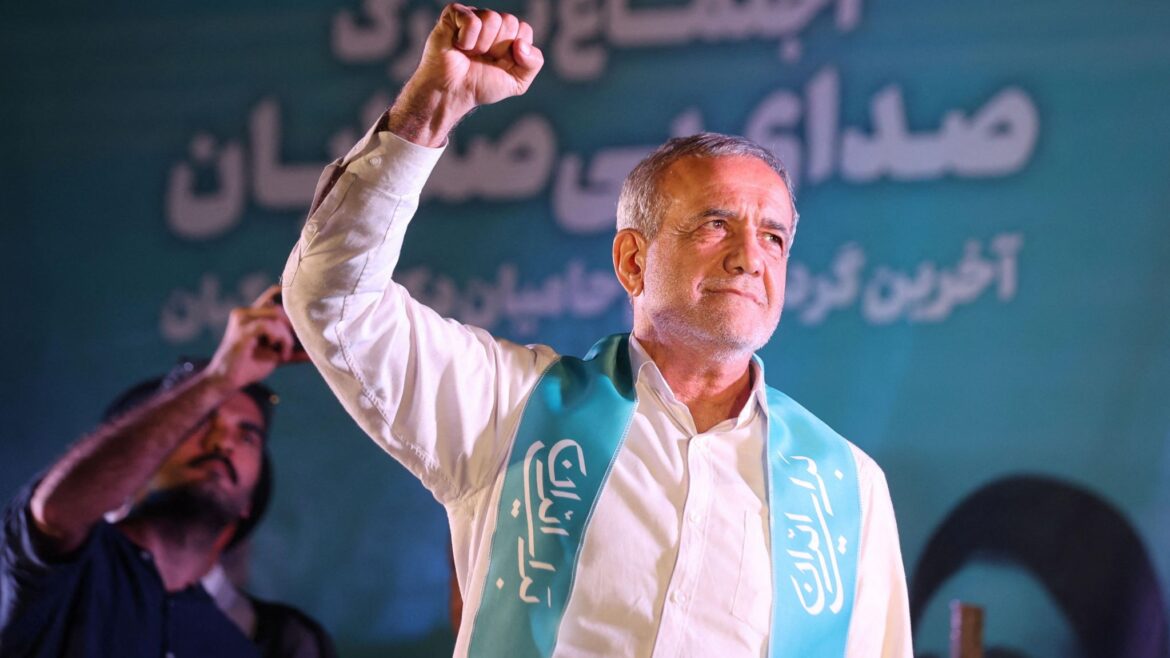Reformer Massoud Pezeshkian elected Iran’s president
Massoud Pezeshkian has won Iran’s presidency, defeating his conservative opponent Saeed Jalili. The final tally, with Dr. Pezeshkian securing 53.3% of over 30 million votes, was declared after a run-off election necessitated by no candidate achieving a majority in the first round on June 28th. Voter turnout was notably low at 40%.
The election followed the tragic death of former President Ebrahim Raisi in a helicopter crash in May, prompting a new round of democratic processes.
Supporters of Dr. Pezeshkian took to the streets in Tehran and other cities even before the official results were announced, celebrating with dancing and waving green campaign flags, while cars honked in solidarity.
A former heart surgeon, Dr. Pezeshkian is known for his criticism of Iran’s morality police and has advocated for national unity, an end to isolationism, and constructive negotiations with Western powers to revive the 2015 nuclear deal.
His opponent, Saeed Jalili, favored maintaining the current status quo and enjoyed strong backing from Iran’s religious communities.
Mr. Jalili is known for his hardline anti-Western stance and opposition to restoring the nuclear deal, which he says crossed Iran’s “red lines”.
Turnout in the latest round of voting was 50% – higher than the first round last week when the turnout was the lowest since the Islamic revolution in 1979 amid widespread discontent, but still low.
Widespread discontent meant that millions of people boycotted the elections.
Lack of choice in the candidates, dominated by Islamic hard-liners, and the impossibility of real change as long as the supreme leader tightly controls policies added to their frustration.
Some people who did not vote in the first round were persuaded to cast their ballot for Dr. Pezeshkian this time round to prevent Mr. Jalili from becoming the president.
They feared that with the victory of Mr Jalili, Iran would be heading for more confrontation with the outside world and that he would bring Iran nothing but more sanctions and more isolation.
To stand, both candidates had to make it through a vetting process run by the Guardian Council, a body made up of 12 clerics and jurists that hold significant power in Iran.
That process saw 74 other candidates removed from the race, including several women.
The Guardian Council has previously been criticized by human rights groups for disqualifying candidates who are not loyal enough to the regime.
After years of civil unrest – culminating in anti-regime protests that shook the country in 2022-23 – many young and middle-class Iranians deeply mistrust the establishment and have previously refused to vote.
On Iranian social media, the Persian hashtag “traitorous minority” has gone viral, urging people not to vote for either of the candidates and calling anyone who does so a “traitor”.
But Supreme Leader Ayatollah Ali Khamenei has rejected suggestions that the low turnout represents a rejection of his rule.
“There are reasons [behind the low turnout] and politicians and sociologists will examine them, but if anyone thinks that those who did not vote are against the establishment, they are plainly wrong,” he said.
In a rare move, he acknowledged that some Iranians do not accept the current regime. “We listen to them and we know what they are saying and it is not like they are hidden and not seen,” Mr Khamenei said.
Within Iran, local media has encouraged people to cast ballots.
Reformist daily newspaper Sazandegi said “the future is tied to your votes” while the Hammihan newspaper said “now it’s your turn”.
Tehran municipality-run daily newspaper Hamshahri published a piece entitled “100 reasons for voting”, while the state broadcaster-run daily newspaper Jaam-e Jam said Iran was “awaiting the people”.


